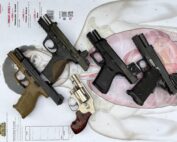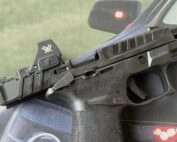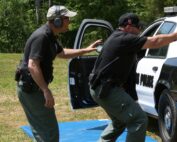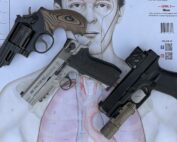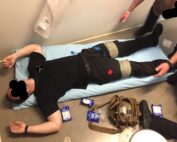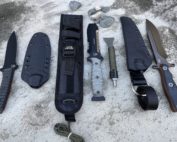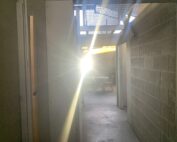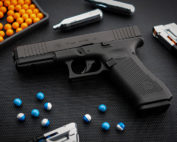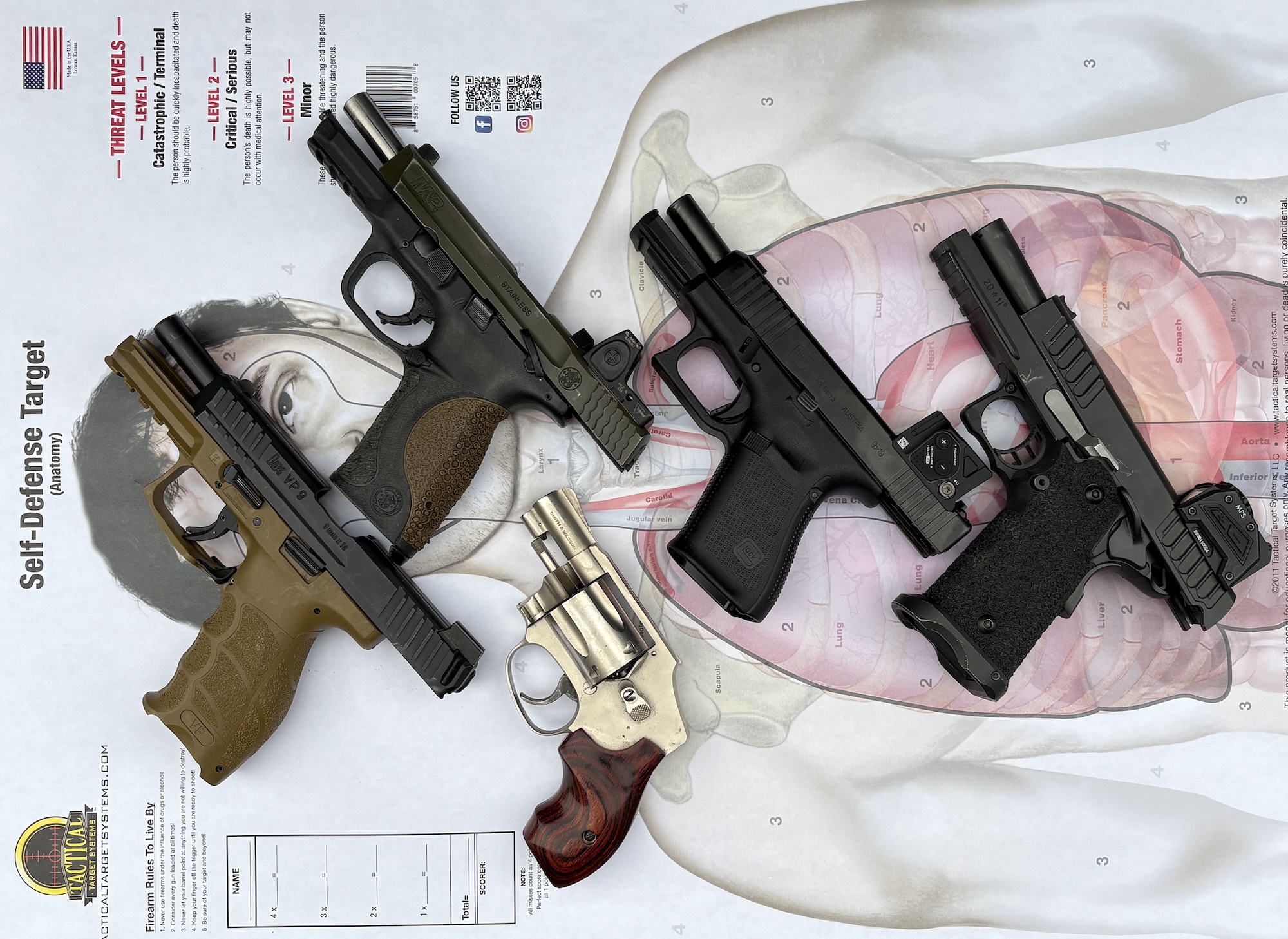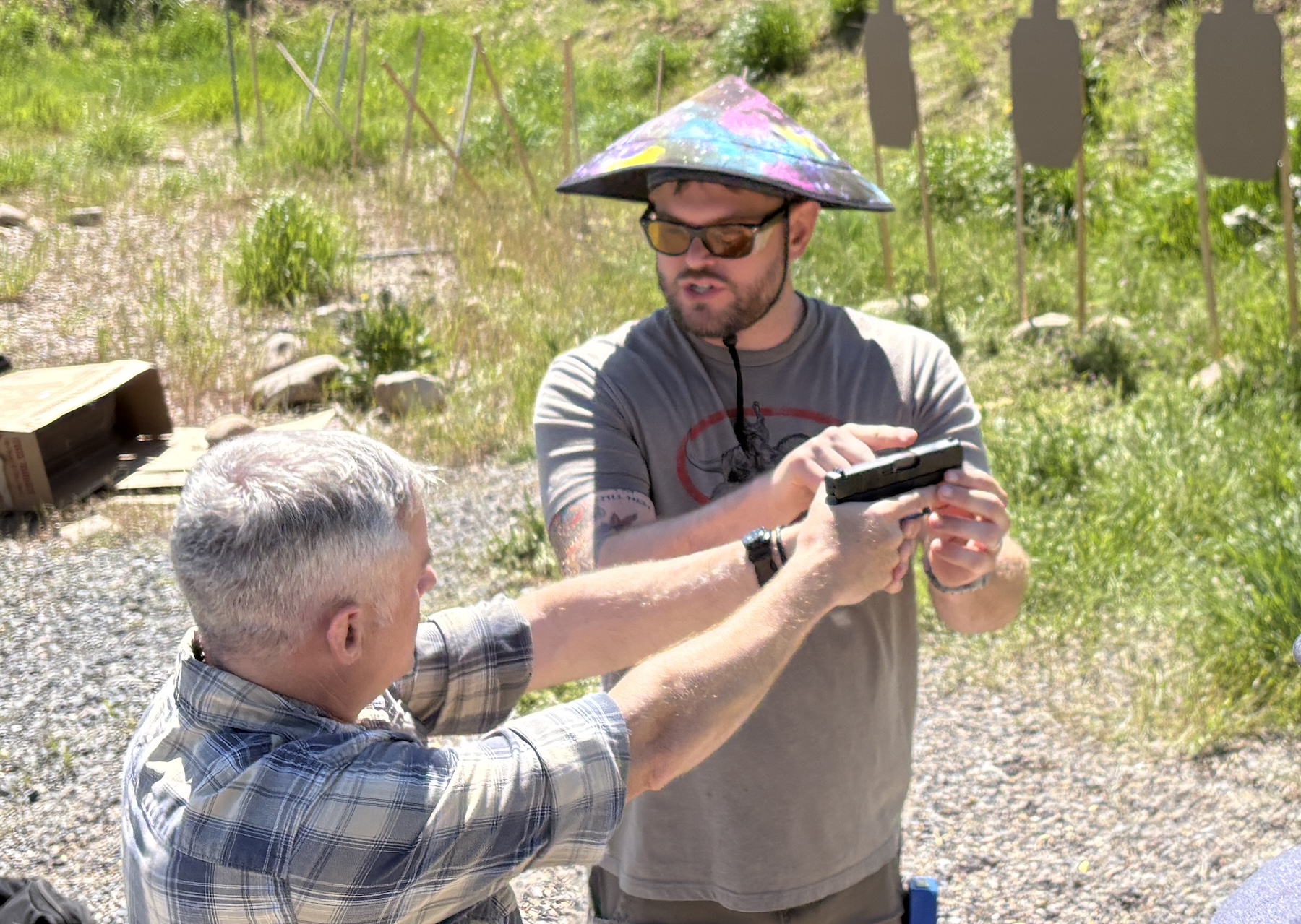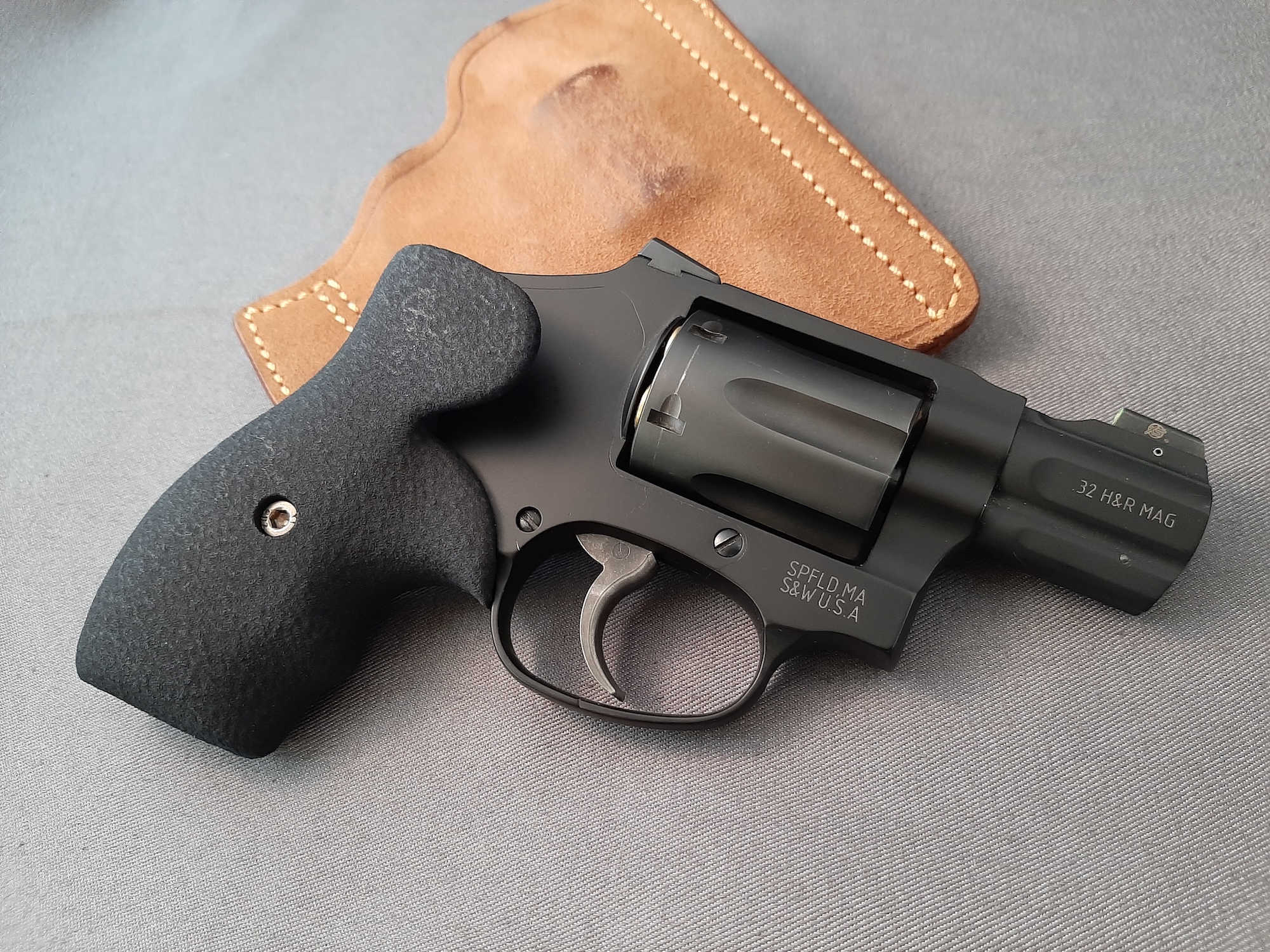
feature2024-08-19 at 7.46.13 PM copy
In Part 1, I covered the company and the design. This second part covers my experiences shooting the XR920P and seeing the Shadow System pistols in two week-long classes.
The XR920P is a full-sized, duty pistol with a compensator on it. It is also cut for a common optic footprint.
Break-In
When I came on as a new deputy sheriff and started the field training program, I was allowed to carry a semi-auto pistol. This was in the fall of 1990. One of the set-in concrete rules at the time involved breaking the pistol in. We were expected to have shot our semi-auto pistol a ot before we showed up at the range to shoot a qualification. What was that number? Back then, it was 500 rounds through the pistol.
Function
Why am I bringing that up? There was mention of the need to conduct a break-in with the XR920P. During the first range trip, there were some stoppages. Ultimately, that became the break-in session. There were no stoppages in several follow-up sessions.
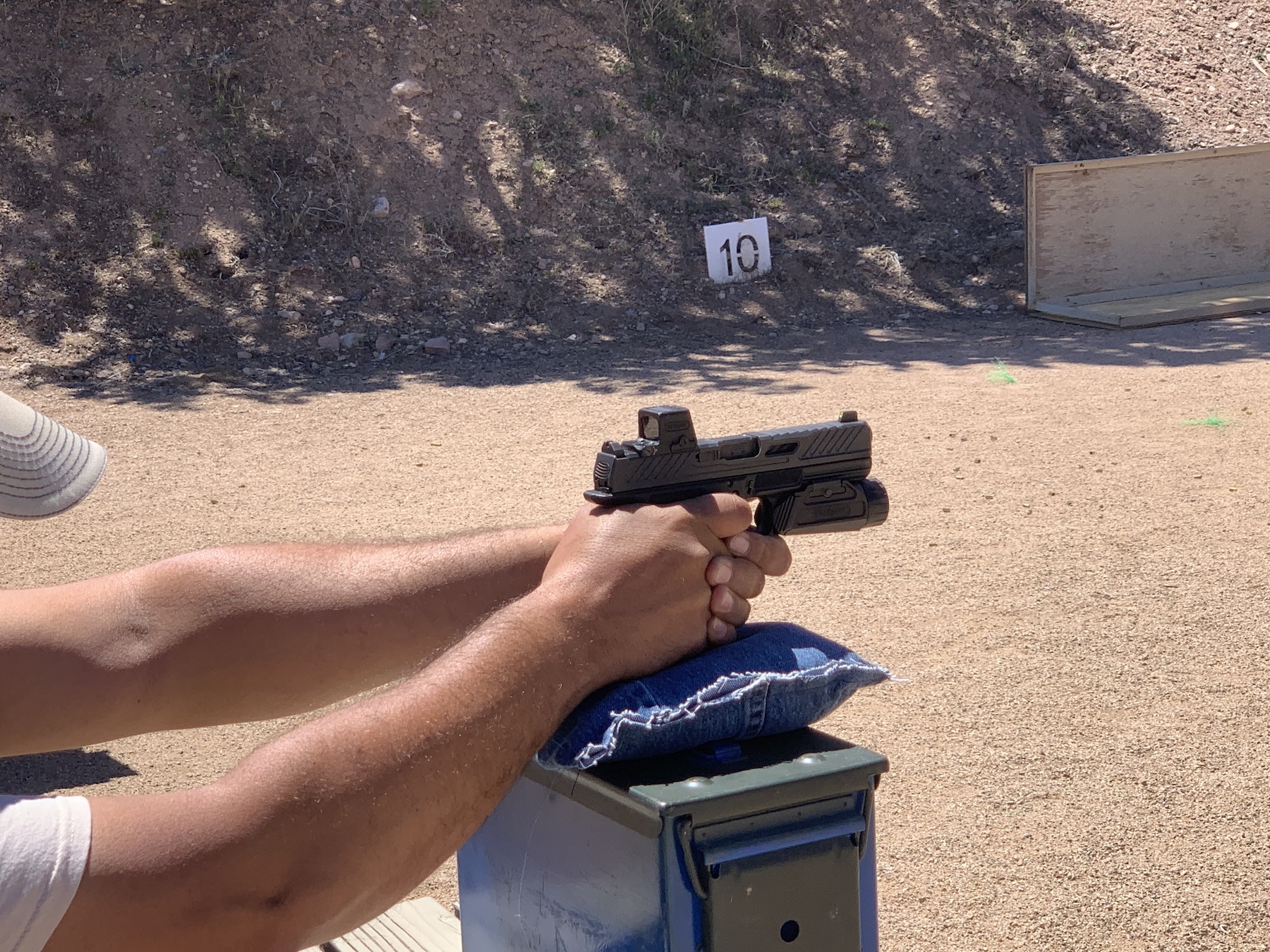
One of several shooters from the sales group zeroing his Shadow System’s pistol during a class earlier this year.
In the two contract classes I taught, each student shot about one thousand rounds a class. That included about 950 rounds of ball ammunition and another 50 of frangible ammunition.
Ammunition
During my time with this pistol, I fired loads from multiple manufacturers. That included Blazer Brass-cased 124-grain ball, Staccato’s 124-grain training and 125-grain match loads, and High Desert Cartridges’ 124-grain ball rounds.

Clint shot these after a full day of teaching with temps in the high 90s. These were singles to the head and pairs to the body.
After the initial break-in, I did not experience any issues when shooting the XR920P.
In one of the classes I taught, the students were shooting a 115-grain ball from a domestic manufacturer. Several of the shooters experienced an issue with the jacket or coating. Within the 3—to 5-yard range, some of the shooters saw spalling on their targets. Some of them also experienced failures to fire. While disconcerting, that is an ammunition issue.
In the other class, they used ball ammunition from a foreign manufacturer, which had a significantly high number of failures to fire. To say the range between the 3—and 15-yard lines was littered with live rounds that had good “firing pin” strikes would not be overstating it.
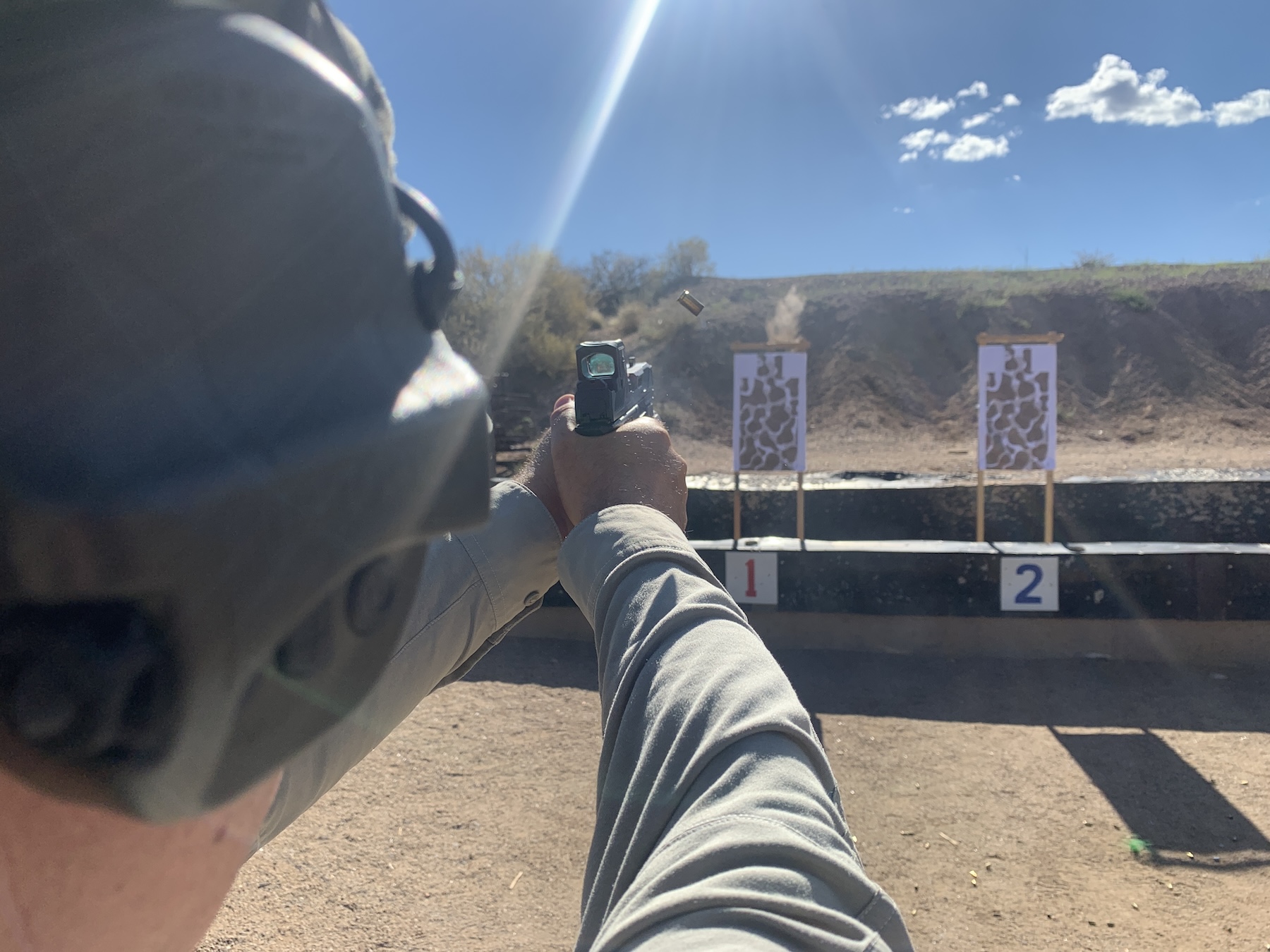
Dust from an impact on the berm, after exiting the target, is visible as the spent case has been ejected, and the sight is coming back on target.
When the ammunition in those classes functioned as intended, the pistol ran quite well, and it consistently shot to the point of aim.
Feel
While the XR920P looks like a handgun designed in Austria, it is a product-improved design built here in the United States. Rather than having an add-on backstrap, Shadow Systems went with an insert.
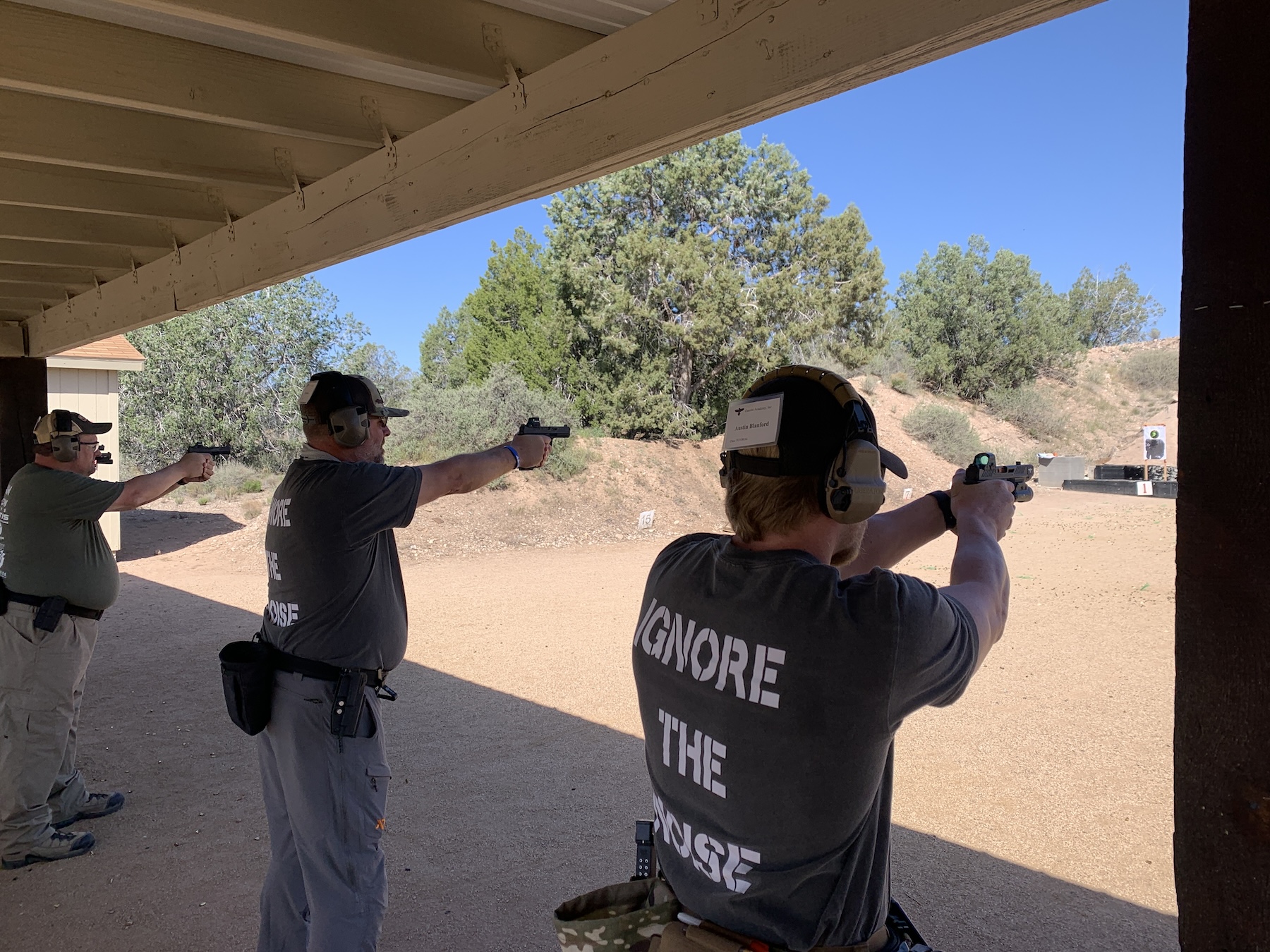
Using these Shadow System pistols with optics, these shooters had little issue engaging from 25 yards.
Because of that design, there is little way to adjust for the grip angle. I did not see a way to address the grip angle as I can with the current fifth-generation pistols by cutting down and profiling one of the beaver tail backstraps.
My impressions when shooting the XR920P? It is a very flat-tracking pistol. At best, I experienced minimal muzzle rise. Both of those are very likely the result of the compensator. If there is a question about the pistol’s recoil impulse, I would almost ask what impulse? As with the issue of muzzle rise, the felt recoil just was not noticeable.
Another Instructor’s View
Fellow Gunsite instructor Clint Achziger shot the pistol as well. His thoughts on it included:
Ergonomically, it is a very well-designed gun;
It was quite comfortable in his hands;
The felt recoil was minimal when compared to other striker-fired pistols;
He felt the sights returned to the point of aim quickly after recoil;
While the trigger is visually similar to that of its ancestor, he felt it was cleaner with a crisper feel.
The Optic
So far, I have not experienced any mounting issues with the Trijicon RCR optic. After the test fit, it was degreased and assembled with thread locker to the manufacturer’s torque specifications. It has zero throughout the test period.

I have had a Modlite PL350C on the pistol for nearly all of the shooting. Modlite’s rocker system is the only one I am comfortable manipulating this way.
Of the twenty pistols I had seen previously, one of them had experienced an optic mounting failure. Both screws had come loose. Even though each appeared to have had thread locker on them, they also had the lower threads stripped. Those screws were replaced, and the optic was re-mounted and re-zeroed. There were no other issues.
Final Thoughts
A number of law enforcement agencies issue or have approved the use of Shadow System guns for duty. Based on my experiences with their pistols in classes and the sample I have been shooting, I would not feel under-equipped with it.
Retail pricing seems to be in the $1090 range.
RESOURCES:
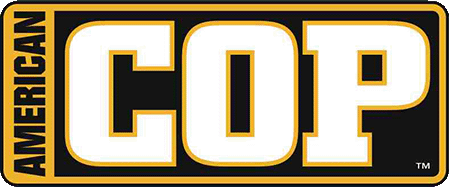

 (+4 rating, 4 votes)
(+4 rating, 4 votes)
